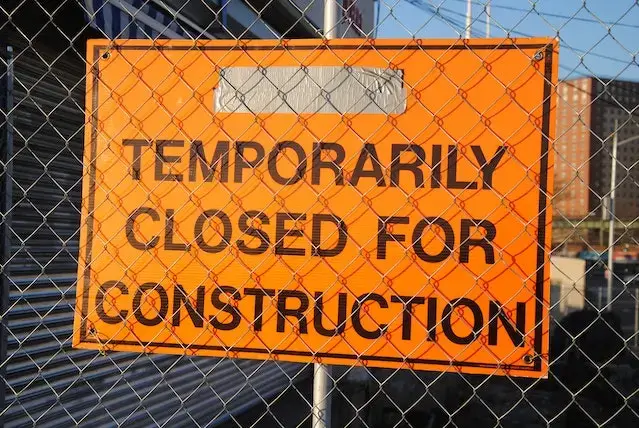In industrial settings such as factories, warehouses, and construction sites, safety is essential. Workers face daily hazards that can lead to accidents or injuries.
Safety standards, including the use of prohibition signs, play a vital role in ensuring everyone returns home safely.
These signs clearly communicate what actions are not permitted, helping to prevent incidents before they occur.
By understanding and using prohibition signs correctly, organisations can create safer and more efficient workplaces.
Understanding Prohibition Signs
A prohibition sign is a safety tool that communicates what should not be done in a specific area.
It serves as a universal “do not” symbol, reminding people to avoid unsafe actions such as smoking in hazardous zones, entering restricted areas, or operating machinery without proper training.
The most recognisable feature of a prohibition sign is the red circle with a diagonal line cutting through it. This simple yet powerful design provides an immediate visual warning to workers, helping them avoid actions that could cause harm or accidents.
A prohibition sign differs from other types of safety signage commonly seen in industrial environments. Warning signs indicate potential hazards, such as slippery floors, without prohibiting specific behaviours.
Mandatory signs tell workers what actions they must take, such as wearing protective gear, while emergency signs provide direction in case of a crisis, such as locating fire exits.
Using prohibition signs ensures that everyone understands what is off-limits. This clarity helps reduce risks and supports the creation of a safe working environment for all employees.
Legal Requirements and Industry Standards
In many countries, workplace safety regulations require the use of prohibition signs in industrial environments. Organisations such as OSHA (Occupational Safety and Health Administration) in the United States, ANSI (American National Standards Institute), and the European Union have established guidelines to standardise safety signage.
These regulations ensure that workplaces remain as safe as possible by clearly marking prohibited areas and unsafe actions.
For instance, OSHA mandates that employers display appropriate safety signage in areas containing hazardous chemicals or machinery. Such standards promote consistent safety practices and reduce confusion among workers.
Compliance with these requirements is not only a legal obligation but also an ethical responsibility. Adhering to signage standards prevents accidents, protects employees, and promotes smooth business operations.
Failure to meet these obligations may lead to legal consequences such as fines or work stoppages. Ultimately, compliance demonstrates an organisation’s commitment to maintaining a safe and responsible workplace.
Types of Hazards Prohibition Signs Address
Prohibition signs help mitigate several common hazards in industrial settings. The main types include:
Chemical Hazards: These signs restrict entry to areas where toxic or reactive substances are present, reducing the risk of exposure.
Machinery Hazards: Prohibition signs mark areas with dangerous equipment to ensure that only authorised and trained personnel have access.
Fire Safety: In areas where flammable materials are stored, signs such as “No Smoking” prevent activities that could trigger fires.
Electrical Hazards: Signs warning against entry to high-voltage areas protect workers from electrical shock or electrocution.
Personal Protective Equipment (PPE) Requirements: Some prohibition signs specify actions that cannot be performed without proper protective equipment, reinforcing safety compliance.
By clearly identifying these hazards, prohibition signs make workers more aware of potential dangers and help prevent accidents.
The Role of Prohibition Signs in Preventing Accidents
Prohibition signs play a key role in reducing workplace accidents by preventing human error. These signs act as constant reminders of restricted actions and unsafe areas.
For example, a “No Smoking” sign in a chemical plant can prevent fires, while a “Do Not Enter” sign near heavy machinery keeps untrained personnel away from dangerous moving parts.
Research supports the effectiveness of clear signage in reducing workplace injuries. Studies show that safety signage can decrease the number of accidents by as much as 30 percent in high-risk environments.
Data from OSHA also highlight that well-maintained safety signage contributes to lower injury rates and improved overall safety performance.
In short, prohibition signs save lives and prevent costly disruptions by helping workers make safer decisions.
Prohibition Signs as Part of a Larger Safety System
Although prohibition signs are essential, they function best when integrated into a broader safety management system. This system includes employee training, safety drills, and emergency preparedness plans.
Workers who are trained to recognise and follow prohibition signs are more likely to act safely and responsibly.
Regular maintenance also plays a key role in ensuring the effectiveness of prohibition signs. Signs should remain visible, legible, and in good condition.
Over time, exposure to the elements or workplace wear can cause signs to fade or become damaged. Conducting routine inspections ensures that safety signage remains reliable and up-to-date.
In addition, supervisors and safety officers should reinforce the meaning of prohibition signs during safety briefings. This ongoing communication strengthens workplace awareness and promotes a consistent safety culture.
Prohibition Signs Are Essential for a Safe Workplace
Prohibition signs are more than just visual warnings; they are fundamental to building and maintaining a safe work environment.
When used correctly, they reduce the likelihood of accidents, minimise human error, and protect workers from hazardous situations.
Every company, regardless of size or industry, should view prohibition signs as indispensable components of its safety strategy.
Investing in effective signage is not merely about compliance but about safeguarding lives and fostering a culture of responsibility.
